Delightful Dahlias
August 13th, 2021 | Categories
Sarah Squire explores the origins, varieties and caring of Dahlias…
If I recall correctly, one of P G Woodhouse’s creations was Bertie Wooster’s Aunt Dahlia. She must surely have had an August birthday for this is the month when these colourful exotic plants bloom. Dahlias originated in Mexico and were introduced to Europe in the Eighteenth Century by the Spanish. They are sub tropical plants which need abundant water and food to perform their best.
The Dahlia may originally have been a foreign import but many British gardeners have taken it to their hearts, not without reason for they are relatively easy to grow, highly decorative and can give years of pleasure. Nor surprisingly, they are a favourite plant for the enthusiast to propagate for showing.
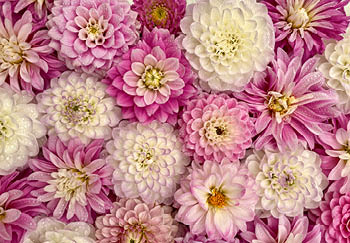
There are basically two types of Dahlia. There are bedding Dahlias which are smaller and propagated from seed and then there are the splendid border Dahlias propagated by cuttings or division of their tubers. Dahlias are further classified according to the shape of their flowers into anemone, ball, pom pom, cactus, water lily and so on.
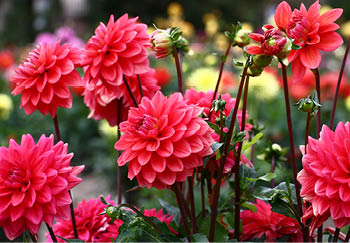
This is the time of year to sit back and enjoy Dahlias, and the only attention they should need is to tie their stems in to their stakes and for the tubers to be well fed and watered.
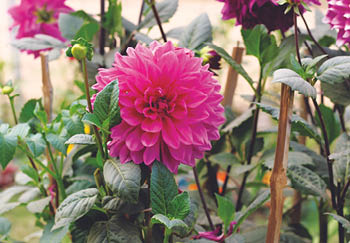
Dahlias are available pot grown and can be planted at any time after the danger of frost is over. However, the traditional way of growing Dahlias is to plant tubers in April. Dahlias need a warm sunny position. Ideally the site should be dug over the previous autumn and farmyard manure incorporated into the soil together with an application of bonemeal. Tall Dahlias (4-5 ft.) should be spaced about 2-3 ft apart, medium height Dahlias 2 ft. apart and bedding Dahlias every 15 inches or so. The stake should be inserted before planting and should be shorter than the eventual height of the plant. As Dahlias approach flowering sufficient water is essential. A mulch in July will also help to keep the moisture in and control weeds. Gardeners often pinch out the growing point of the stem at the end of May to encourage the side shoots to develop.
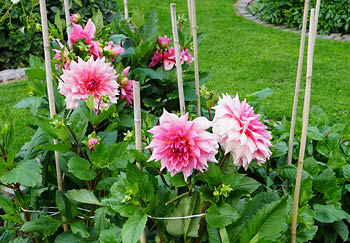
At the end of the season, when the growth has been blackened by the first frosts, the tubers can be dug up and stored in a cool dry place for the following year. In mild areas the tubers can be left in the ground but this is risky as the combination of low temperatures and damp can prove fatal.
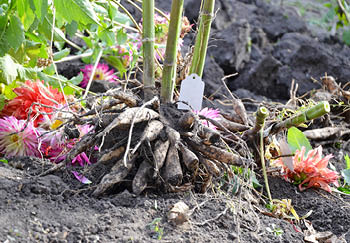
One of the most distinctive Dahlias is “Bishop of Llandaff” which has glorious red flowers and even more spectacular dark bronze foliage and stems. “Rhonda” is a pale pink flowered pom pom, “Butterball” is a delicious mid yellow and “Paul Chester” is a cactus flowered orange Dahlia. Whites and Purples are also well represented.
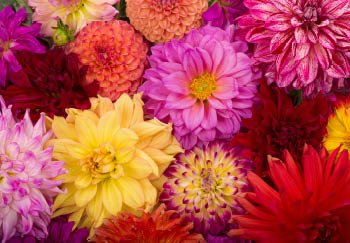
Above all Dahlias make a statement, bold, beautiful and perhaps just a little brazen, Ibiza on a stem – perfect for the holiday month.
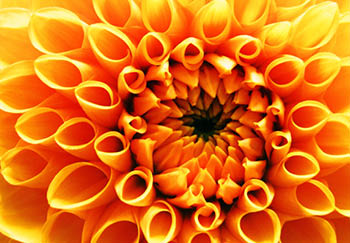
Useful Links
- Dahlia Growing Guide (Article)
- Summer Flowering Bulbs (Article)
- Summer Gardening (Article)
- Growing Guides (Article)






